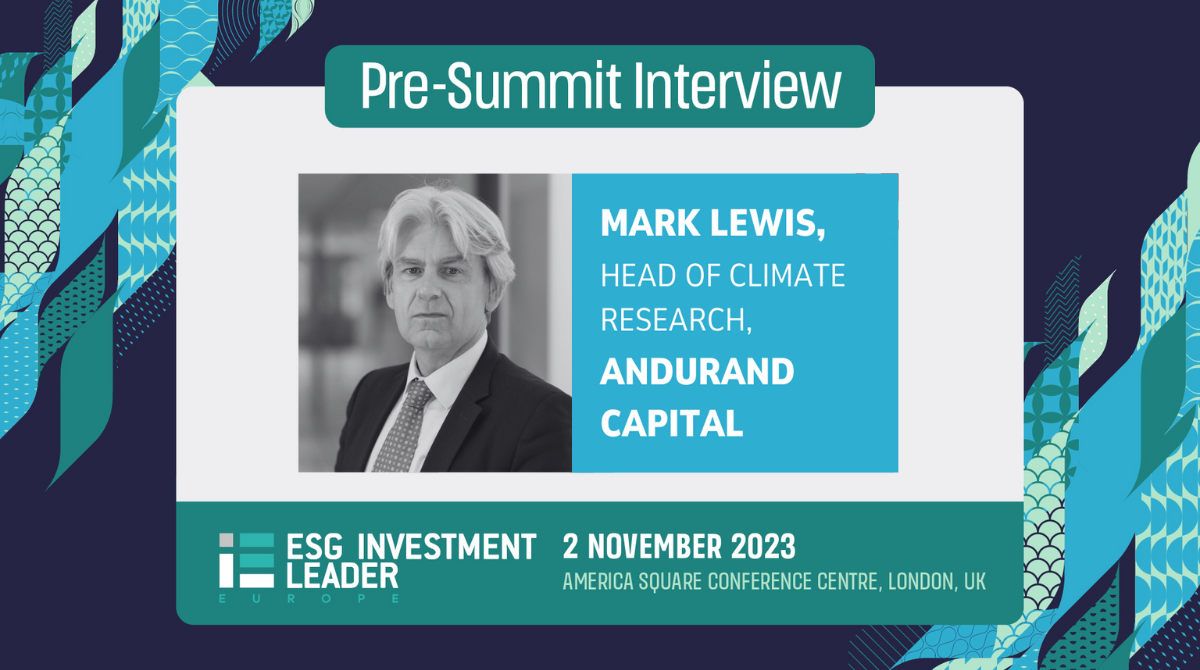Andrew Putwain: To what extent is the lack of data - or insufficient data - a pain point for you in the industry?
Alex Struc: It's a well-reported pain point in the industry. However, we see it more as an opportunity because we are constantly trying to ascertain the difference between financial accounting (audited financials that companies publish; historical) and what does management accounting (companies’ internal metrics and targets) potentially looks like.
Management accounting, where it exists, is forward-looking and therefore sensitive and private. Because not all relevant data can be disclosed, we as investors are looking to estimate what the company is trying to achieve – both in terms of delivering financial targets and broader societal goals – based on what is publicly reported and our own interpolation and analysis.
As frustrating as data imperfections may be, they offer alpha opportunities for those with research capabilities who prioritise clear thinking and better quality of insight.
Andrew: How do you bring together information provided by issuers with reporting requirements for asset managers and owners? What are the main difficulties – and opportunities – you’re seeing in this area?
Alex: Any intellectual work is painstaking and requires going through a lot of data, which can also sometimes be incoherent.
To tackle these issues, the Task Force on Climate-Related Financial Disclosures (TCFD) framework has been helpful because the way that it's laid out makes it seem like it's been taken directly from Peter Drucker's book on organisational management.
While it’s been designed for climate, internally we use it for organisational infrastructure. It helps us better understand strategy and risk management for the entire business, not just climate exposure. Organising data in that way helps us organise our minds, make more accurate projections, and reach meaningful conclusions.
Andrew: How does domicile influence E, S, or G focus and operational load? What are the biggest market differences that you’re seeing – especially between developed and emerging markets in various regions and where it’s being politicised?
Alex: I don't fully buy into the rhetoric that ESG means different things to different people. We think ESG follows the same formula, just with different calibrations.
We look at environmental, social, and governance risks strictly through the prism of public-private partnerships (PPP) and how these PPPs can deliver an outcome.
Through this lens, what's happening today will not seem novel; you can trace it back at least 200-to-300 years. Europe has developed socially with a lot more hands-on public policy, which in turn also shaped the nature of private capital.
In the US, public policy plays a different role leaving a wider gap for entrepreneurial spirit and venture capital. Therefore, private capital is comparatively more significant than in other regions in delivering public outcomes – including education, infrastructure, and healthcare.
So, for us, ESG sensitivities follow the same formula whether in Europe, the US, or elsewhere globally. The calibration comes down to the nature of PPPs: who takes the bigger role, who takes a smaller role, and what are the associated risks, opportunities, and subsequently, outcomes.
This framing impacts the investment process; it affects the formation of capital structures; and, most importantly, it shapes product designs and the subsequent governing regulations.
Andrew: What comes next after reporting? And beyond eliminating greenwashing and accurately accounting for changing labels and regimes, what is the biggest what is the bigger picture of what you're trying to achieve with ESG – whether it be risk mitigation, stewardship, longevity, or something else?
Alex: From our perspective, the biggest business and socio-economic opportunity we see is enabling one to link financial decisions with social architecture.
Every time people part with their money as investors, they should be able to equitably participate in the prospective returns but also in shaping their impact on their broader society.
The key implication for the product design and the investment process is that in exchange for your money, you shouldn’t be getting not one, but all three properties of capital embedded in finance.
First is the clarity on the sources of risk, return, and impact associated with your portfolio. Second is access to risk-adjusted performance. And, finally, it’s agency – an equitable share of influence and the ability to shape an outcome through a personalised vote.
For us, stewardship and strategic engagement are the most asymmetric priced and scalable financial and socioeconomic opportunity today.
Alex will be speaking at ESG Investment Leader | Europe 2023 in November in London on “Managing resources in an overcommitted world: Emerging regulation, attractive assets, and coping with shifting E, S, and G priorities”.
For more information, including how to register to attend, click here.
Please Sign In or Register to leave a Comment.
SUBSCRIBE
Get the recent popular stories straight into your inbox




